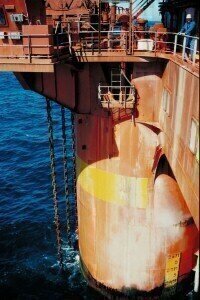Analytical Instrumentation
China Pledges to Reduce Crude Output by 2020
Jan 21 2017
Despite its abundance of ‘teapot refineries,’ China has pledged to cut crude output by 7% by 2020. So what factors will fuel the decline? Primarily, some of China’s largest and oldest wells will cut back on production. In response, China’s natural gas supplies are on track to soar by over 65%.
Covering the 2016-2020 period, the plan was revealed in a publication released by the National Development and Reform Commission (NDRC). If the target is reached, crude output will drop to around 200 million tonnes by 2020, which equates to around 4 million barrels per day. This would represent a 215 million tonne drop, compared to the 2011-2015 plan.
The cost of China’s ageing infrastructure
While in the past China has been at the forefront of global crude production, it’s high cost, ageing fields are sparking a drop in output. The lower oil price landscape is also contributing to the decline, and lowering ROI for refiners.
The trend has been taking shape for several months now, with production down 6.9% in the first 11 months of 2016. At 182.91 million tonnes, this represented a bpd of just under 4 million. Experts are now predicting that Chinese crude output will drop by nearly 500,000 bpd over the next four years.
"We don't see any large greenfield oil developments coming stream by 2020. As such, given the maturity and age of the main oil fields ... we forecast an ongoing decline in output," comments Angus Rodger, upstream research director at global energy consultancy Wood Mackenzie.
LNG set to step up
Meanwhile, NDRC analysts are forecasting that China’s natural gas supply will top 220 billion cubic metres (bcm) by 2020. This is a dramatic increase from the 134 bcm figure that’s defined the 2012-2015 period. It reflects Beijing’s newfound focus on natural gas, and a very clear shift from crude to LNG. Already, the government has confirmed plans to prioritise the expansion of LNG terminals, and boost capacity as needed. Eventually, the goal is to boost capacity to over 400 bcm.
China has also pledged to improve fuel quality in a bid to cut emissions, and introduce the “national six” grade for gasoline and diesel by 2019. This will build on its existing “national five” specifications, which cap sulphur content and regulate other pollutants like aromatics and olefins.
ROI is a major factor for oil and gas producers, particularly when fields are ageing and inefficient. ‘Precision + lower operation cost + minimum initial investment = CID 510’ introduces Constant Volume Combustion Chamber (CVCC) technology, a new technique developed to substitute the CFR Engine, and help refineries contain the costs associated with adding cetane improving additives, while meeting all necessary specifications.
Digital Edition
PIN 25.1 Feb/March
March 2024
In This Edition Safety - The technology behind the ION Science Tiger XT - Safety with ammonia and LOHCs as hydrogen carriers Analytical Instrumentation - Discussion on new tribology te...
View all digital editions
Events
Apr 28 2024 Montreal, Quebec, Canada
Apr 30 2024 Birmingham, UK
May 03 2024 Seoul, South Korea
May 05 2024 Seville, Spain
May 06 2024 Riyadh, Saudi Arabia


















